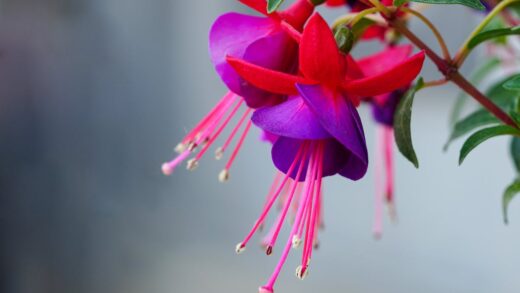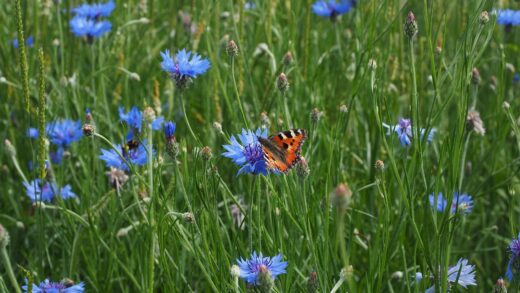Light is the primary source of energy for an amaryllis, driving the critical process of photosynthesis that fuels its growth and spectacular flowering. The plant’s light requirements are not static; they change dramatically throughout its annual growth cycle. Providing the right intensity and duration of light at each specific stage—from the initial sprouting of the flower stalk to the post-bloom foliage development and eventual dormancy—is fundamental to its health and, most importantly, its ability to rebloom year after year. Misunderstanding these shifting needs is a common pitfall that can lead to weak growth and a disappointing lack of flowers in subsequent seasons. Therefore, managing light exposure is one of the most proactive steps a grower can take to ensure success.
When an amaryllis bulb is first waking from dormancy, its primary need is for warmth to stimulate growth, with light being a secondary, though still important, factor. During this initial phase, when the flower stalk is just beginning to emerge, the plant should be placed in a location that receives bright, but indirect, light. An east-facing window, which receives gentle morning sun, or a spot a few feet away from a south-facing window is often ideal. Strong, direct sunlight at this stage is unnecessary and can sometimes be too intense for the emerging tender shoot.
As the flower stalk grows taller, the direction of the light becomes a key consideration. Amaryllis plants exhibit a strong phototropic response, meaning they will bend and grow towards their primary light source. To encourage a straight, upright stalk that can support the heavy blooms, it is essential to rotate the pot a quarter turn every day or two. This simple practice ensures that all sides of the plant receive equal light exposure, promoting even growth and preventing the top-heavy stalk from leaning precariously and potentially breaking. This attention to directional light is crucial for a well-presented floral display.
Once the flower buds have formed and are beginning to show color, the plant’s light needs change again if the goal is to prolong the life of the blooms. At this point, moving the plant to a location with slightly less light and cooler temperatures can significantly extend the flowering period. Direct sunlight will cause the delicate petals to fade and wilt more quickly. By reducing the light intensity, you slow down the flower’s metabolic processes, allowing you to enjoy the stunning display for several extra days or even weeks. This is a simple trick to maximize the reward for your months of care.
Light during the foliage growth phase
The period immediately following the fading of the flowers is when light becomes the most critical factor for the future success of the plant. This is the foliage growth phase, where the amaryllis must work to replenish all the energy it expended on producing its magnificent blooms. The long, strap-like leaves are the plant’s solar panels, and their sole purpose is to capture as much light as possible to create food through photosynthesis, which is then stored in the bulb for the next flowering cycle. Insufficient light during this stage is the single most common reason for an amaryllis failing to rebloom.
To facilitate this vital energy-storing process, the plant should be moved to the sunniest location you can provide. A south-facing window where it can receive at least six hours of direct, unfiltered sunlight per day is ideal. If such a location is not available indoors, the plant can be moved outdoors for the summer months after all danger of frost has passed. When moving the plant outside, it is important to acclimate it gradually to the higher light intensity to prevent the leaves from getting sunburned. Start by placing it in a shady spot for a few days, then move it to a location with partial sun before finally placing it in full sun.
The health and color of the leaves are a good indicator of whether the plant is receiving adequate light. The foliage should be a rich, deep green and the leaves should be firm and upright. If the leaves are a pale green and appear floppy or excessively long, it is a strong sign that the plant is not getting enough light and is stretching, or etiolating, in search of it. A plant in this condition will not be able to photosynthesize effectively and is unlikely to store enough energy in its bulb to produce flowers the following season.
Throughout this summer growth period, continue to care for the plant by watering it regularly and providing fertilizer. The combination of abundant light, consistent moisture, and available nutrients will enable the bulb to grow in size and density, packing itself full of the energy reserves needed for another spectacular performance. Remember that the work you do during this foliage phase is the direct investment you are making in the next year’s floral display. Do not neglect the plant simply because the initial show is over.
The role of light in dormancy
As the growing season winds down in late summer and early autumn, the decreasing day length and lower angle of the sun provide a natural cue for the amaryllis to begin preparing for dormancy. This reduction in light, combined with cooler temperatures and a decrease in water, signals the end of the active growth period. The leaves will stop their vigorous growth and begin the process of senescence, turning yellow as the plant reabsorbs valuable nutrients and chlorophyll from them before they die back. This is a natural and necessary part of the cycle.
Once the foliage has completely died back, the bulb requires a period of complete darkness for its rest. Light is a powerful stimulant for growth, and exposing a dormant bulb to it can cause it to break dormancy prematurely. A premature sprouting would disrupt the crucial internal processes that are taking place, which lead to the formation of flower primordia (the embryonic flower buds). This is why storing the potted bulb in a dark place like a basement, a closet, or inside a cardboard box is a non-negotiable part of successful wintering.
The duration of this dark period is also critical. The bulb needs a minimum of eight to twelve weeks of uninterrupted darkness and cool temperatures to complete its resting phase. This period allows the bulb’s internal chemistry to reset and for the flower development process to be initiated. Cutting this period short is a common mistake that often results in the bulb producing only leaves in the subsequent season. Patience during this dark, quiet phase is essential for a successful reawakening.
When the dormancy period is complete, the reintroduction of light is the primary signal that tells the bulb it is time to grow again. Moving the pot from its dark storage location into a warm room with bright, indirect light is the wake-up call it needs. This sudden change in environment mimics the arrival of spring and triggers the stored energy in the bulb to be mobilized, pushing up a new flower stalk to begin the beautiful cycle all over again. The careful management of the absence and reintroduction of light is what orchestrates this entire process.
Using artificial light
In environments where sufficient natural light is not available, especially during the crucial post-bloom foliage growth phase, artificial lighting can be an excellent alternative to ensure the amaryllis gets the energy it needs. A simple fluorescent shop light or a dedicated LED grow light can provide the necessary spectrum and intensity of light to support robust photosynthesis. This is a particularly useful solution for gardeners living in apartments, in regions with long, dark winters, or for those who simply lack a sunny south-facing window.
When using artificial lights, they should be positioned relatively close to the plant’s foliage, typically between 15 and 30 centimeters above the leaves. The lights need to be on for a significant duration each day to mimic a long summer day. A timer is an invaluable tool for this, allowing you to set the lights to run for 14 to 16 hours per day. This extended period of light exposure ensures that the plant has ample opportunity to photosynthesize and store a maximum amount of energy in the bulb.
The quality of the light is also a factor. While a standard cool-white fluorescent bulb can be adequate, a full-spectrum grow light is ideal as it provides a more balanced range of light wavelengths, including both blue and red light, which are most important for vegetative growth and flowering processes. LED grow lights are particularly efficient, producing high-intensity light with very little heat, which prevents any risk of scorching the leaves.
Using grow lights can give you complete control over the amaryllis’s energy-storing phase, independent of weather or the time of year. By providing consistent, high-quality light for the recommended duration, you can virtually guarantee that your bulb will be fully charged and ready to produce a magnificent display of blooms after its dormancy period. It is a reliable way to overcome the limitations of your growing environment and achieve consistent success with reblooming your amaryllis.



















